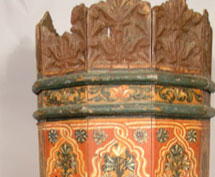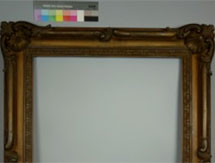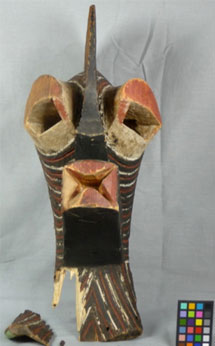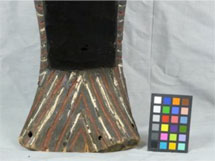Wood is the usual material of choice for furniture and frames, but is also frequently used for decorative objects and ethnographic works. Art objects fabricated from wood are typically decorated with carved detail and often with decorative paint layers.
An organic, cellulosic material, wood is extremely sensitive to changes in temperature and relative humidity. Possible sources of damage can be insects, mold and water, as well as high levels of visible and ultra-violet light. Painted surfaces may be brittle, flaking or delaminating, and physical damage to delicately carved surfaces is common.


Ethnographic objects most often utilize the available natural materials, such as wood, plant fibers, pigments and resins.
SBE Conservation has treated many ethnographic objects with various condition issues. Treatments include surface cleaning, matte paint consolidation, structural repairs, fills and aesthetic reintegration.
The Besongye Mask from the Congo, pictured here, was in need of surface cleaning, paint consolidation, and structural fills related to existing insect damage, in addition to the repair of a broken fragment. The broken piece was reattached with a collagen-based glue. Areas of new loss related to the damage were filled with a cellulosic material which was then toned with the appropriate paint media to match the surrounding areas.

Besongye Mask from the Congo Before Treatment

Besongye Mask from the Congo After Treatment



